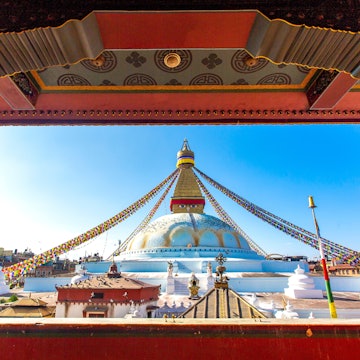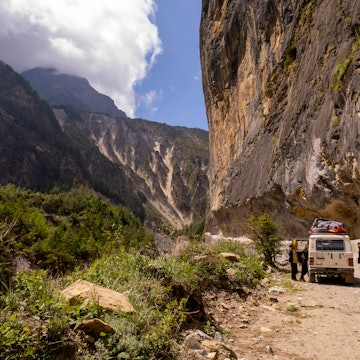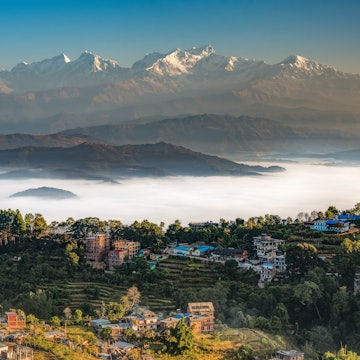

The World Peace Pagoda in Lumbini, Nepal. imageBROKER.com/Shutterstock
The birthplace of Prince Siddhartha Gautama, who the world came to know as the Buddha, Lumbini in Nepal is a UNESCO World Heritage Site that houses several monuments of Buddhist and historical significance. Despite being a while away from the popular Kathmandu-Pokhara-Chitwan golden triangle, Lumbini draws people – primarily pilgrims – to walk in the footsteps of its most famous resident from over 2500 years ago.
The 22,288-km-sq region is divided into three major territories: the Sacred Garden, the Monastic Zone, and the Cultural Centre and New Lumbini village. Among other structures and sites, it contains remains of viharas – Buddhist religious buildings and pilgrim accommodation – and stupas, and newer, contemporary monasteries built by countries around the world to pay homage to the Buddha.
As you walk among orange- and maroon-robed monks and past prayer flags, here's everything you need to know to plan your visit to this spiritual site.

When should I go to Lumbini?
The best time to visit Lumbini is between October and December, right after monsoon and before it gets too cold. The monsoons are avoidable with constant rain that hinders movement, as do the deep winters of January and February – the winter fog can keep landmarks covered for a good part of the day. March and April are pleasant, but Lumbini is only at an elevation of 150m so unlike in Nepal’s mountain destinations, the summer months of May and June frequently hit 35–40°C (95–104°F). However, if you have it in you to brave the sultry weather, it is worth going there in May (or April, depending on the Hindu calendar) to see the Buddha Jayanti festivities that mark the Buddha’s day of birth.
How much time should I spend in Lumbini?
For a traveler headed to Lumbini with the intent of ticking it off their bucket list, a day’s visit is enough to cover its major landmarks. However, a 2-day stop is the bare minimum for anyone who wants a more wholesome experience. To get under the skin of not just the monuments, but also Buddhism and its basic tenets, add a third day to explore surrounding areas and absorb the atmosphere to understand why the faith echoes with many people around the world including those who consider themselves spiritual but not religious. For those who want to pursue the complete Gautam Buddha circuit and explore the surrounding districts of Lumbini that comprise the Greater Lumbini area, a week is recommended.

Is it easy to get in and around Lumbini?
The closest airport for Lumbini is Bhairahawa in Siddharth Nagar, better known now as the Gautam Buddha International Airport. It’s about 18km away from Lumbini Garden – the core complex – and can be reached conveniently by taxi in half an hour. There are buses all the way from Kathmandu too, but poor road conditions can make the 10-hour journey exasperating.
Due to its proximity with India, many cross the border near here, including backpackers traveling through Varanasi, who make Lumbini their starting point for exploring Nepal. The best way to cross the border from India is by train to Gorakhpur in Uttar Pradesh, then bus to the border town of Sunauli. Cross over into Nepal by foot (or take a rickshaw if you don’t want to navigate the crowds) and hop on a bus to Lumbini 36km away.
Within Lumbini Garden, move around on bicycles. Go to the Tourist Information Centre for an overview of the site and start from the entrance at Gate no 1. Alternatively, sign up for the increasingly popular e-rickshaw tours.
Top things to do in Lumbini
Cycle around Lumbini’s lanes
The best way to explore Lumbini is on a bicycle. It allows you the freedom to set your own pace, admire sites at leisure, and break your journey as you please. Take your time and soak in the placidity of the place.

Walk around the Sacred Garden
For nearly everyone who visits Lumbini, the Sacred Garden, believed to be the space where the Buddha was born, tops the list. This is spread around the Maya Devi temple named after his mother, the queen who stopped here on her travels to birth the prince who would renounce his kingdom. Just outside the Maya Devi temple stands the third-century Ashoka Pillar that testifies the birth of the Buddha in 623 BCE via an inscription on it. It was commissioned by Mauryan emperor Ashoka the Great to commemorate his visit nearly 375 years after the Buddha’s birth, after he became an ardent follower of Buddhism.
Climb up the World Peace Pagoda
Among the more recent structures of the Monastic Zone, the World Peace Pagoda built by Japan dominates the skyline with its gleaming white dome. Walk up its steps to get an overview of the surroundings and go inside to see the Buddha’s statues in all his famous postures.
Chat about life and philosophy with monks
It’s not uncommon to approach a monk who will be happy to answer your questions on life, Buddhist philosophy, and his own life beyond Buddhism. Better still, prebook a personalized tour through Rural Heritage with a Buddhist scholar to walk around Lumbini (or beyond) for a deeper historical insight.
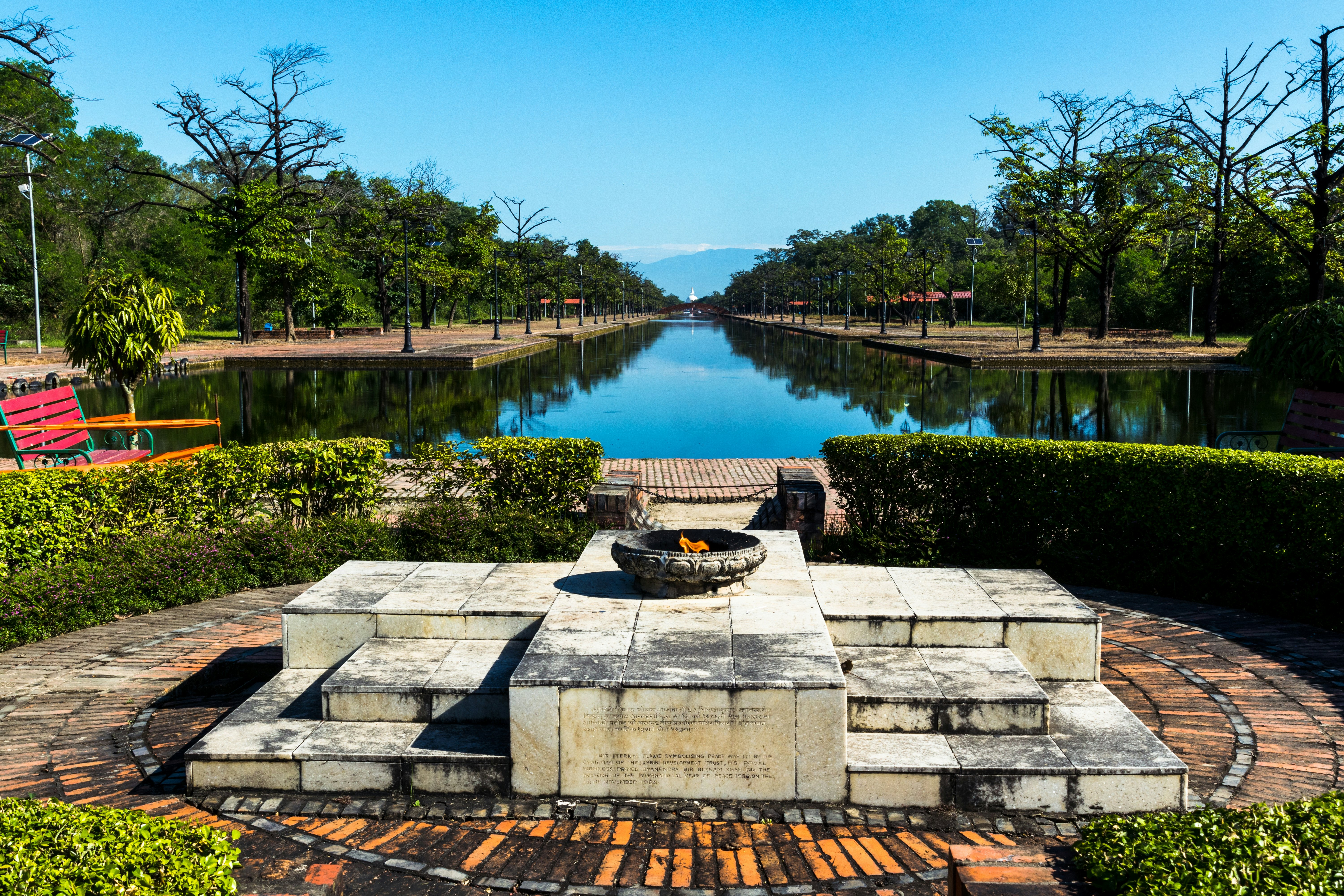
Boat down the Central Canal
A unique way of seeing Lumbini is by floating through it on a boat down the central canal to the Eternal Flame that has been burning there since 1986. You can do a round trip, or go one way, with boats present on either end of the 1.3km-long canal that connects the Sacred Garden in the south and the World Peace Pagoda in the north.
Go beyond Lumbini
While Lumbini garden is the birthplace of the Buddha, other nearby places played a notable role in his life and are of equal historical importance. Devadaha, the hometown of Gautam Buddha’s mother, Queen Maya, is 57km away, and has monuments built in her honor. Tilaurakot, the paternal home where little Siddhartha grew up, is another historical site with remains of a walled city. Nyigrodharama, now known as Kudan, is 6km further away from Tilaurakot. It is where Buddha’s son Rahul was also ordained as a monk at the tender age of eight. Archaeological work has revealed evidence of this history, which can be explored in a day trip from Lumbini.
My favorite thing to do in Lumbini
Rows of small shops and informal cafes skirt the main Lumbini complex, filled with travelers curious about Buddhism and friendly monks breaking for some tea. My absolute favorite thing is to cycle past these rows, soaking in the scenery, occasionally stopping to join in a conversation on divinity with the contemporary seeker. In between sips of tea and nodding my head in agreement over the flexible nature of Buddhism and alternating it with a rebuttal over the absolutes of religion, I always end up making a new set of friends, both Nepali and from around the world.
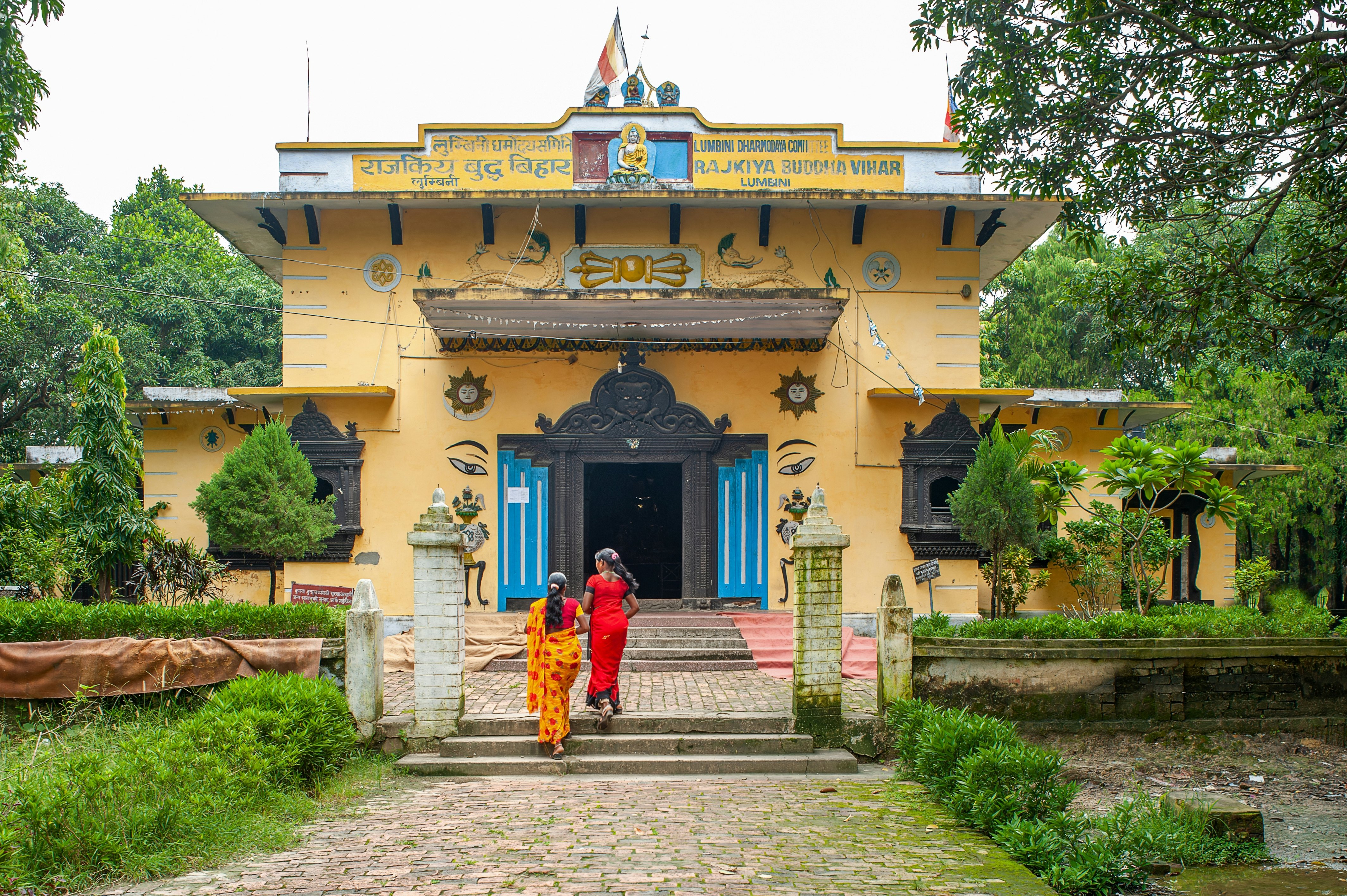
What should I wear in Lumbini?
There is no dress code at the site, but covering up is considered respectful in monasteries. Expect to remove your shoes before entering the Maya Devi temple.
How much money do I need for Lumbini?
For travelers from most countries, Nepal is considered a value-for-money destination, including in Lumbini.
Budget guesthouse: Rs 1500
Hotel for two: from Rs 5000
Entrance for non-SAARC foreign nationals: Rs 700
Bicycle rental for the full day (from Gate no 5): Rs 500
E-rickshaw tour: Rs 500 per hour (it takes about 4 hours to cover the main sights)
Round trip boat ride: Rs 150
Car hire for a day trip (8 hours): Rs 7500
Coffee: Under Rs 20
Sandwich: Rs 150
Beer (pint): Rs 500
Meal for two at a top-end hotel: Rs 2500
Should you interact with monks, a small donation of Rs 100 (at a minimum) is appreciated. Alternatively, you can donate in-kind – locals typically give packaged snacks and drinks.








